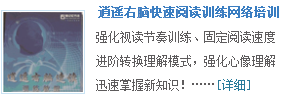Content
Identifying evidence and examples
Learning Objectives
1. Understand what is meant by evidence.
2. Understand the purpose of evidence in reasoning.
3. Identify different forms of evidence.
4. Understand the purpose of numerical data and statistical.
5. Identify where further clarification of evidence is needed.
Procedure
1. Icebreaking
Please analyze the following argument:
Ahmad’s old car is dangerously rusty and it breaks down almost every day. He has got a well-paid summer job at the local solicitors’ office. Ahmad should get a new car.
We can analyze the argument as follows:
R1: Ahmad’s old car is dangerously rusty.
R2: It breaks down almost every day.
R3: He has got a well-paid summer job at the local solicitors’office.
C: Ahmad should get a new car.
Questions:
1) Are all the information in the three reasons true?
2) If they are true or false, can we verify them?
Key terms:
1) A fact is information that can be verified and that is held to be true.
2) A factual claim is a statement or judgment based on a fact. That is, before we accept a fact as a factual claim in an argument, we have to check whether it is true or not.
Factual claims are something that is used to develop or support a reason. Besides, what else can be used to develop or support a reason?
2. A big picture of the lesson
1) What is evidence?
2) In what form can evidence be?
3) What is the purpose of evidence in reasoning?
3. Activities
A. Examples
Case 1:
Fruit that can be grown in the UK, such as apples, pears, raspberries, gooseberries and strawberries, has many advantages. It doesn’t need to be transported around the world. It tastes superior. In short, it is by far the best choice.
Here, the example of apples, pears, raspberries, gooseberries and straw berries provides an image or concrete situation to develop the reason “Fruit that can be grown in the UK has many advantages.
Case 2:
You don’t need a large garden to grow your own food. Many kinds of fruit and vegetables can be grown in contains, which will fit even on a small balcony. For example, Uncle Brian grows potatoes in a dustbin, and tomatoes, peas, beans and strawberries, all in pots on the patio.
Here, Uncle Brian is an example that supports the reason by demonstrating that the general statement is not just an abstract idea, but has instances in the real world.
Activity 1: Identify the evidence and the examples in the following short argument.
Research carried out by the University of Hertfordshire involved interviewing 100 people aged between 22 and 45 who had been speed-dating. Chat-up lines that are questions rather than statements were found to be more successful. ‘I have a PhD in computing’, is off-putting but ‘What is your favorite pizza topping?’ evokes a positive response. So, if you want to chat someone up successfully, you should give them the chance to respond in a light-hearted way.
B. Numerical and statistical data
Case 3:
On average I spend roughly £15 a week on travel.
Sometimes, numerical data can be used to support a reason.
Case 4:
Researchers who worked with families and day care cnetres have found that children who are cared for at home by a parent until the age of 2.5 achieve higher levels in standard tests when they are 7 than children who attended day care centres.
Statistical data can also be used to support a reason. Statistical data can often be presented as percentage or properties, graphs, diagrams or images.
Activity 2: Identify the evidence in the following short arguments and state what form(s) the evidence takes.
(1) A survey reveals that while 40% of teenagers have no religious faith, the level of unbelievers drops to a mere 8% in the over-65 age group. The closer we get to the Pearly Gates, the more we hedge our bets.
(2) One major chain store has a new method of encouraging recycling: the UK’s first coat hanger amnesty will be held by Marks & Spencer. Research shows there are currently 530 million unused coat hangers stored in UK homes. This would equate to 17,000 tonnes of plastic that could either be reused or recycled. Customers can bring unwanted hangers into stores on the days of the amnesty and place them in the recycling boxes. This is a useful way to reduce waste dumped in landfill, but it would be far better if shops were to stop handing out coat hangers altogether.
(3) More than 3.5 million people in Britain -6% of the population- belong to a gym or fitness club, presumably
thinking that exercise improves their quality of life. However, growing numbers of scientists accept that punishing
workouts are unnatural for the human body and may ultimately impair physical fitness, as demonstrated when
Jim Fixx, the American pioneer of jogging, collapsed and died at the age of 52. In order to maintain good health,
people should cancel their fitness club subscription and adopt a healthier lifestyle.
(4) D. The increase in numbers of a wild bird in Scotland despite its declining numbers in the rest of Europe has
mystified experts. RSPB Scotland said it was delighted but it was a mystery as to why red-throated divers had done
so well. Their numbers have risen from 935 to 1255 breeding pairs in twelve years. However, in Shetland the
population has dropped from 700 pairs to 407. Dr Mark Eaton, an RSPB scientist, said: “ We feared the numbers of
red-throated divers might drop because the warming of the North Sea seems to be reducing stocks of the fish they feed
on”. Projections about the disastrous effects of global warming on wildlife clearly need revising.
C. Problems with evidence based on surveys and sampling
Look at Case 4, and think about the following questions:
-- Who funded the research? A specialist university or a company that sells early learning packs designed for parents to use with their children?
-- How many children were sampled? Two, twenty or two thousand?
-- Were the day care centres in similar social areas to the children who were observed at home?
-- How well educated were the parents and the day care staff?
-- How did the researchers get access to the children? Probably they could work only with parents who were willing to take part in the survey. These perhaps were parents who were happy with their role at home.
D. Evaluating evidence
When you are evaluating evidence and examples, you may need to ask these questions:
(1) Is this evidence meaningful?
(2) Who funded the survey or research?
(3) What was the size of any sample?
(4) Was the sample representative?
(5) How was any survey conducted?
(6) When was the survey carried out?
(7) Are examples typical and relevant?
(8) Are research findings clear-up or ambiguous?
4. Summary
You should be able to:
-- identify evidence and examples in argument
-- explain the purpose of evidence and examples in an argument
-- assess evidence from research or surveys by considering the questions that could be asked to clarify that evidence
本文来自:逍遥右脑记忆 http://www.jiyifa.com/gaozhong/114400.html
相关阅读:学习英语看中文电影的英文字幕 _课外阅读



